Mass 1.6 – 2 g (Adult) Clutch size Female: 2 (Adult) Higher classification Mellisuga | Phylum Chordata Family Trochilidae Scientific name Mellisuga helenae Length 5 – 6 cm (Adult) Rank Species | |
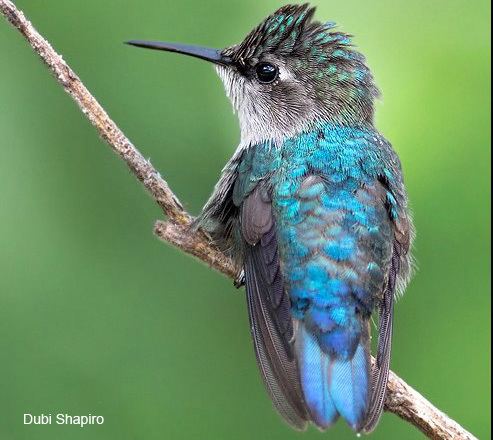 | ||
Similar Hummingbird, Bird, Mellisuga, Bumblebee hummingbird, Ruby‑throated hummingbird | ||
The bee hummingbird, zunzuncito or Helena hummingbird (Mellisuga helenae) is a species of hummingbird.
Contents
Habitat and distribution
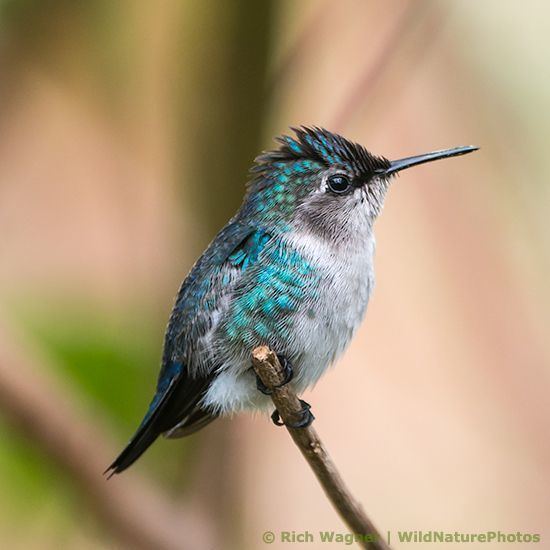
Mellisuga helenae is endemic to the entire Cuban archipelago, including the main island of Cuba and the Isle of Youth in the West Indies. It is found mainly in Cuba's mogote area and uncommonly in Playa Larga near Zapata swamp, but has been spotted in western Cuba.
Description
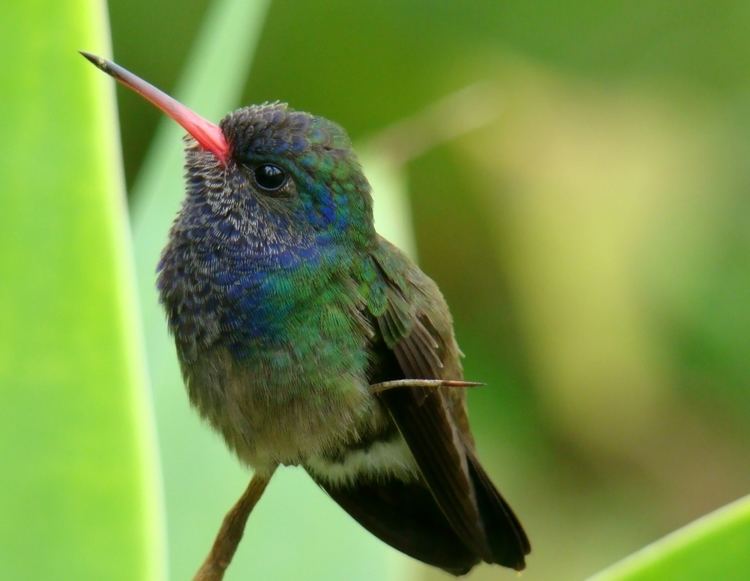
With a mass around 1.6–2 g (0.056–0.071 oz) and a length of 5–6 cm (2.0–2.4 in), it is the smallest living bird. The male has the green pileum and fiery red throat, iridescent gorget with elongated lateral plumes, bluish upper-parts, and the rest of the underparts mostly greyish white. The male is smaller than the female. The female is green above, whitish below, with white tips to the outer tail feathers. Compared to other small hummingbirds, which often have a slender appearance, the bee hummingbird looks rounded and chunky.
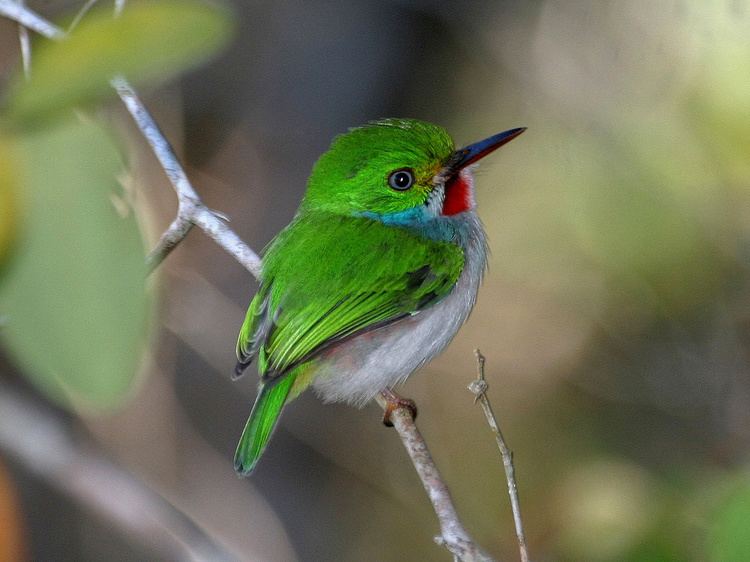
Female bee hummingbirds are bluish green with a pale gray underside. The tips of their tailfeathers have white spots. During the mating season, males have a reddish to pink head, chin, and throat. The female lays only two eggs at a time.

As the smallest bird in the world, it is no larger than a big insect and, as its name suggests, is scarcely larger than a bee. Like all hummingbirds, it is a swift, strong flier.
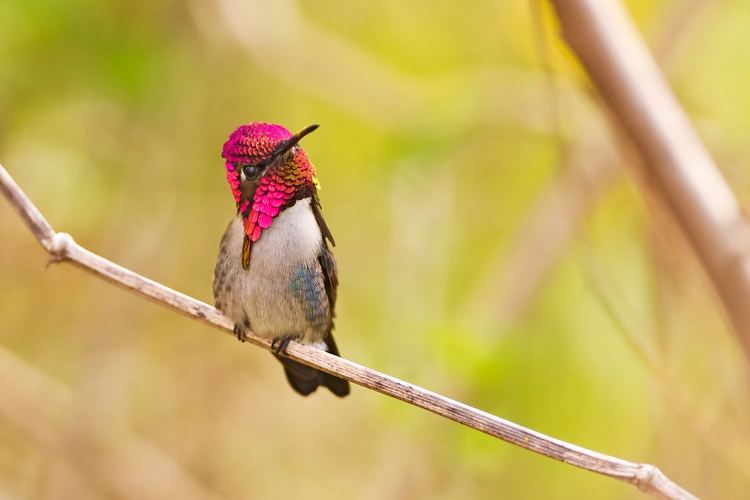
The brilliant, iridescent colors of the bee hummingbird's feathers make the bird seem like a tiny jewel. The iridescence is not always noticeable, but depends on the angle at which a person looks at the bird. The bird's slender, pointed bill is adapted for probing deep into flowers. The bee hummingbird feeds mainly on nectar, and an occasional insect or spider, by moving its tongue rapidly in and out of its mouth. In the process of feeding, the bird picks up pollen on its bill and head. When it flies from flower to flower, it transfers the pollen. In this way, it plays an important role in plant reproduction. In one day, the bee hummingbird may visit 1,500 flowers.

Using bits of cobwebs, bark, and lichen, the female bee hummingbird builds a cup-shaped nest that is only about 2.5 cm (0.98 in) in diameter. Nests have been built on single clothespins. She lines the nest with soft plant fibers. In this nest she lays her eggs, which are no bigger than peas. She alone incubates the eggs and raises the young.
Diet
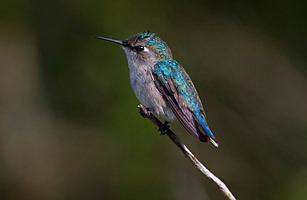
The bee hummingbird has been reported to visit 15 plant species from 15 different genera. However, in more recent studies, only 10 were found; nine of them were found to be endemic to Cuba. These flowers include Hamelia patens (Rubiaceae), Chrysobalanus icaco (Chrysobalanaceae), Pavonia paludicola (Malvaceae), Forsteronia corymbosa (Apocynaceae), Lysiloma latisiliquum (Mimosaceae), Turnera ulmifolia (Passifloraceae), Antigonon leptopus (Polygonaceae), Clerodendrum aculeatum (Verbenaceae), Tournefortia hirsutissima (Boraginaceae), and Cissus obovata (Vitaceae).
Breeding
The bee hummingbird's breeding season is from March–June.
Interactions
Generally speaking, the hummingbird/plant interaction is a notable example of bird-plant co-evolution, and the bee hummingbird is no exception. The food plants provide nutrition while the hummingbird acts as pollinator. To a large extent, both rely on each other for survival.
